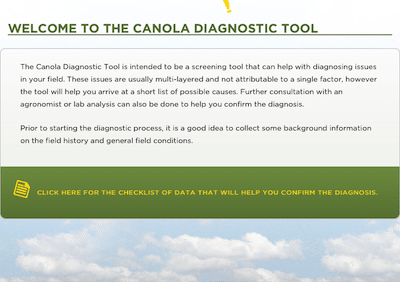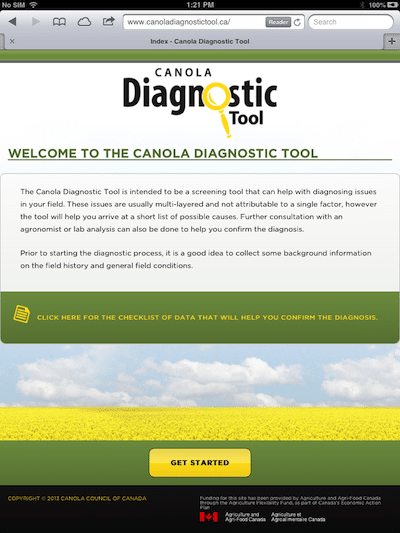The week after seeding is a good time to dig up seeds and seedlings to check for rots and blights. Disease damaged seed and seedlings die quickly, and may be gone within a few days, which is why this timing is important to an accurate diagnosis.
Seedling diseases caused by fusarium and pythium species tend to be worse in cool, wet conditions while rhizoctonia tends to be worse when canola emergence is delayed due to cool, dry conditions. The broad spectrum fungicide seed treatments used to treat certified seed typically provide good protection from these seedling diseases.
The tell-tale sign of disease is patchy emergence up to the four-leaf stage of the crop. Seeds or seedlings may decay prior to emergence or the seedlings may emerge and appear normal, then stagnate at the two- to four-leaf stages. These plants will often die.
While scouting, also look for…
Seeding issues. Check that the seeding job measured up to expectations, and if seeding equipment met the need. Look for emergence patterns that may indicate an issue with depth control, leveling, compaction, packing or speed that can be adjusted for next year. Crusting could also be a factor.
Plant Stand. Record the plants per square foot at various locations to see how well canola established based on the combination of variety, seeding rate, equipment and moisture. Keep this information along with seeding rate, rainfall before and after seeding, soil temperature at seeding, and general soil conditions (lumpy, mellow, etc.). This data will help establish and understand the seedling survival rate for that field.
Frost damage. When canola fields get an early season frost, wait at least 4 days after the frost even to assess regrowth before making any decision regarding reseeding. Click here for more frost assessment tips.
Weeds. Pre-seed and/or early in-crop are the most economic times to spray for weeds. This gets weeds when they’re small and easier to control, and before they can take moisture and nutrients away from the crop.
Flea beetles. Canola is at greatest risk up to the 4-leaf stage, although in some cases they can feed all season long. If flea beetles are overwhelming the seed treatment, then consider a spray if more than 25% of leaf area has been eaten and flea beetles are still actively feeding on the crop. Examine newer leaves for recent damage. Canola seed treatments require a bit of feeding to stop flea beetles, so older leaves may show some damage for this reason while newer leaves may be undamaged.
Cutworms. Look for bare patches and dig around the perimeter of the patch to look for cutworms just below the soil surface. A number of insecticide options exist for cutworm control. However, if scouting determines that wireworms or gophers are the problem, the sprayer does not provide a solution. The preferred time to spray for cutworms is in the evening or at night. Click here for more on cutworm identification, scouting and management.
Click here for a list of items to have in your scouting toolkit.
Click here to download the scouting calendar.


